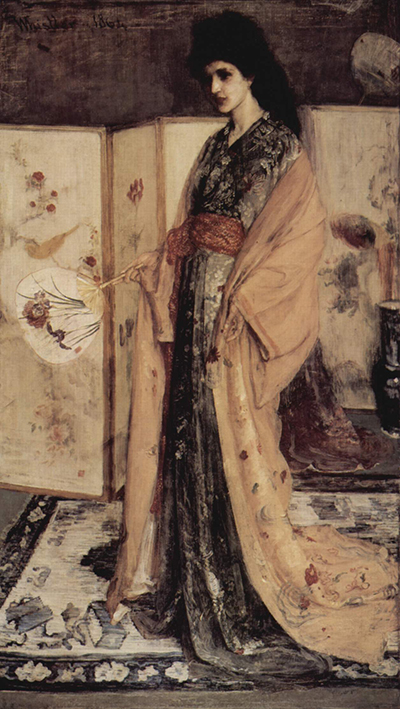James Abbott McNeil Whistler was able to change the course of art history with his radical artistic techniques. This he did by adapting to the Asian design principles, which techniques emphasized a two-dimensional flattening of painted forms and their arrangements into abstract patterns.
His revolutionary method was able to change the existing approaches to oil paint, paste, watercolour, etching-even the interior design and the decorative art. Whistler embraced and promoted the doctrine that art art should not serve a narrative, but rather project the artist's subjective feelings through the handling of the medium. The Princess from the Land of Porcelain painting is a depiction of a beautiful Western woman wearing a Hanfu (a kind of Chinese traditional clothing). She is portrayed standing amidst numerous Asian objects such as a rug, screen, and some porcelain vases. The woman in the picture is Christine Spartalli whose father commissioned the painting but later refused from purchasing it. The painting was worked on for two years i.e. between 1863 and 1865.
A striking fact which hardly escapes notice is the large amount of gold colour employed by the artist in the development of this amazing piece of beauty. It appears that a similar theme runs through his other paintings such as Caprice in purple and Gold number 2.The princess from the land of porcelain is currently housed in the peacock room at the Freer Gallery. It is hung above the fireplace amidst a rotating stock of Asian ceramics.
Whistler's work incorporated many sources of art work. This includes the work of Rembrandt, Velazquez, Japanese art and the ancient Greek sculpture to be able to develop his own highly influential and individual style. During his life he was able to influence two generations of artists in both Europe and the United States. Whistler had protégés in Walter Sickert and writer Oscar Wilde. Whistler s tonalism had a great effect on many American artists including John Singer Sargent, William Chase and Willis Adams (whom Whistler befriended in Venice). Arthur Frank Mathews, whom Whistler met in Paris, was also greatly influenced by Whistler's genius. Through Mathews, Whistler's tonalism technique was taken to San Francisco, spawning a broad use of the technique among turn-of-the-century California artists.




